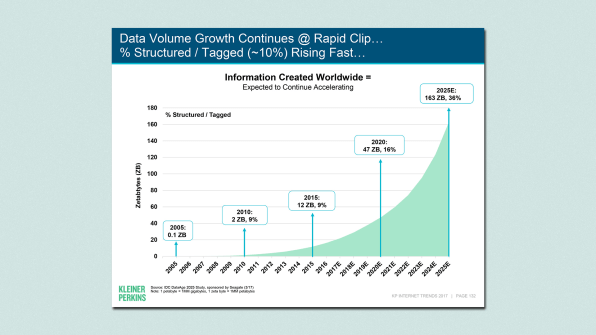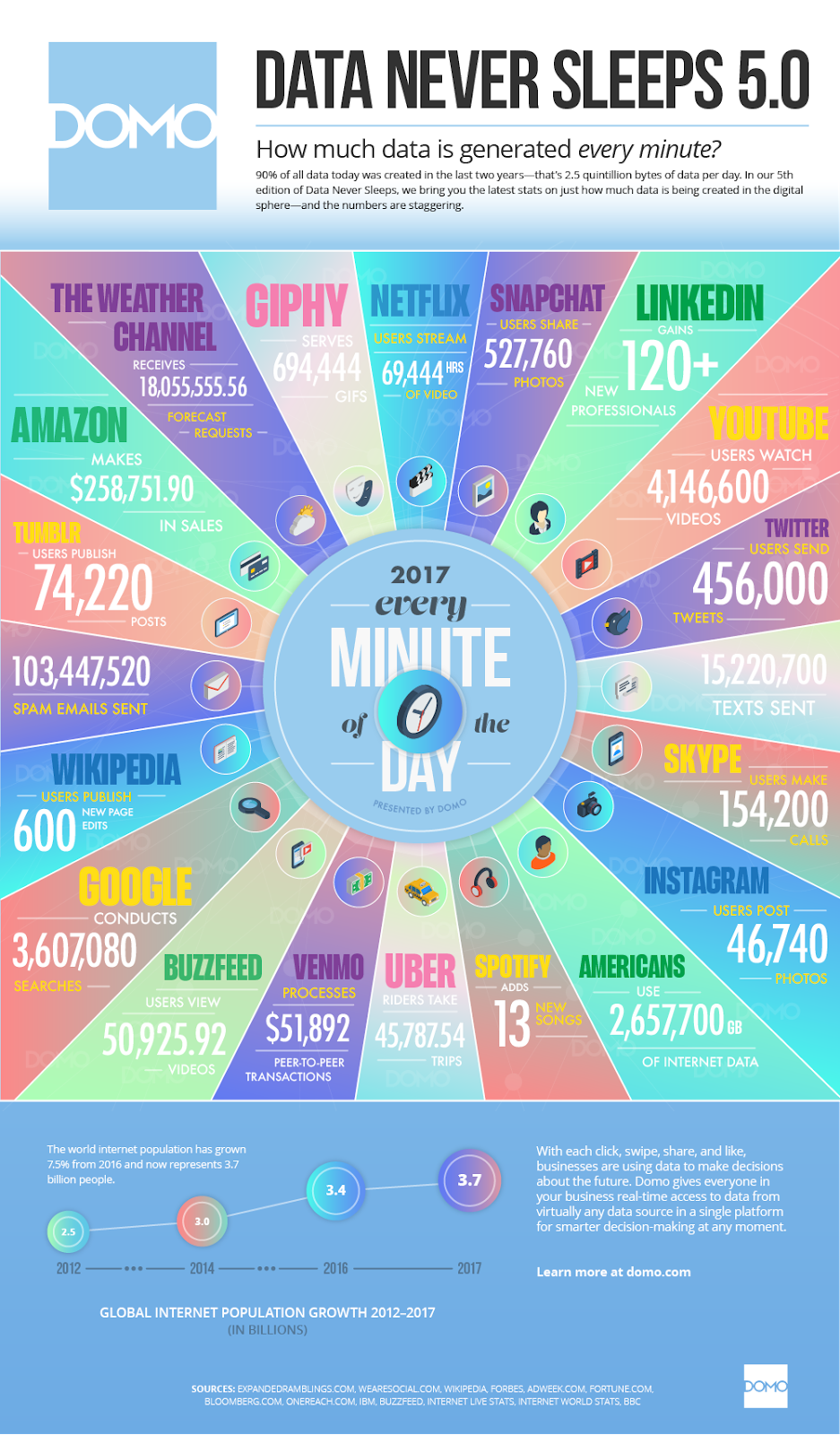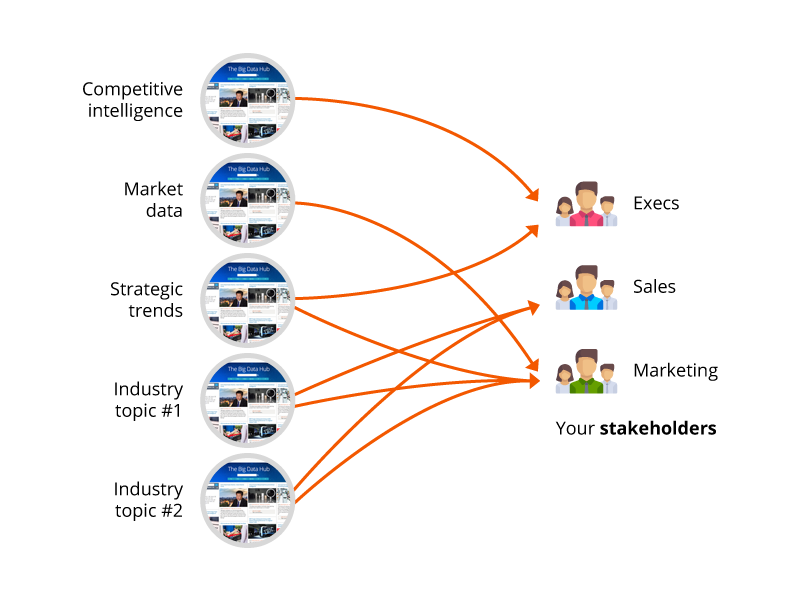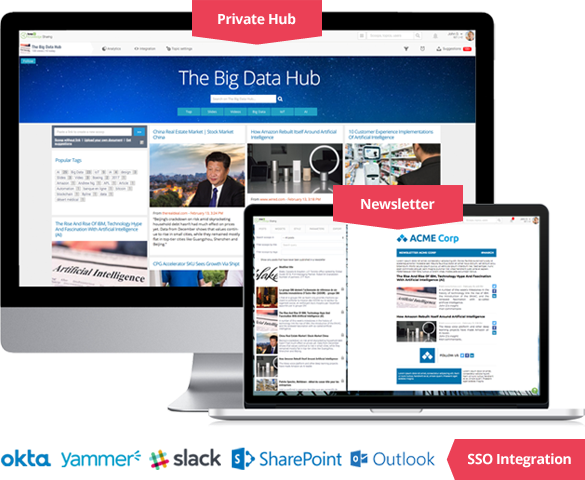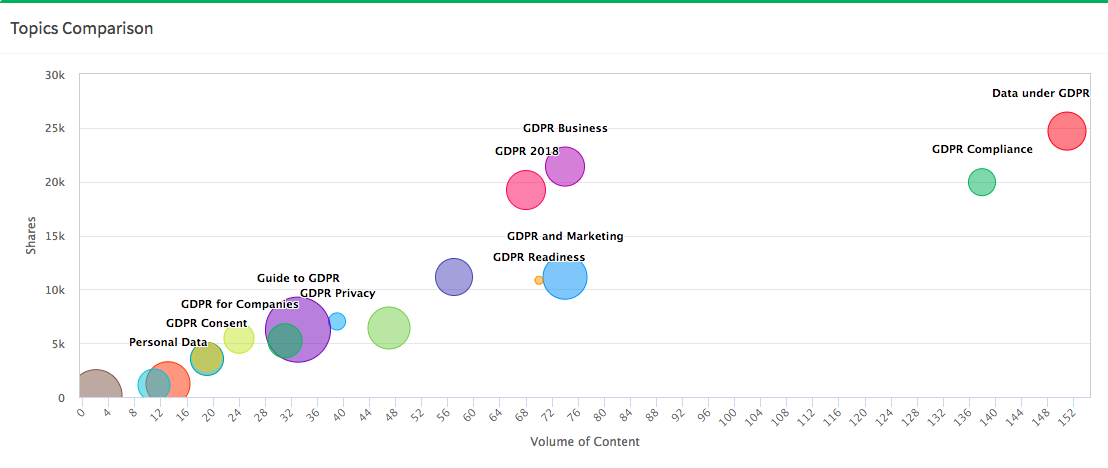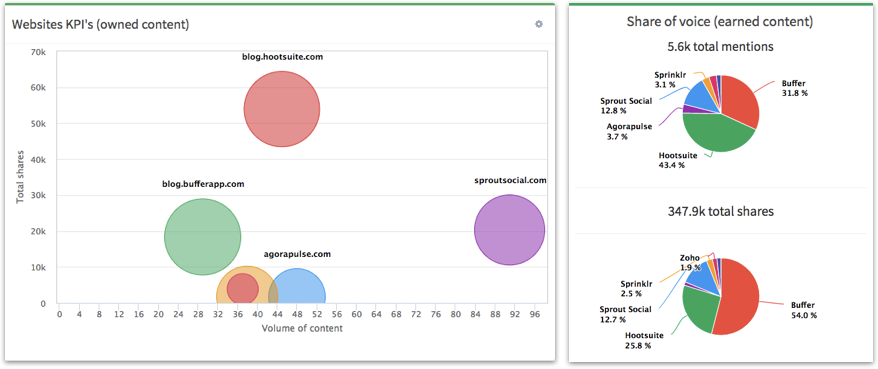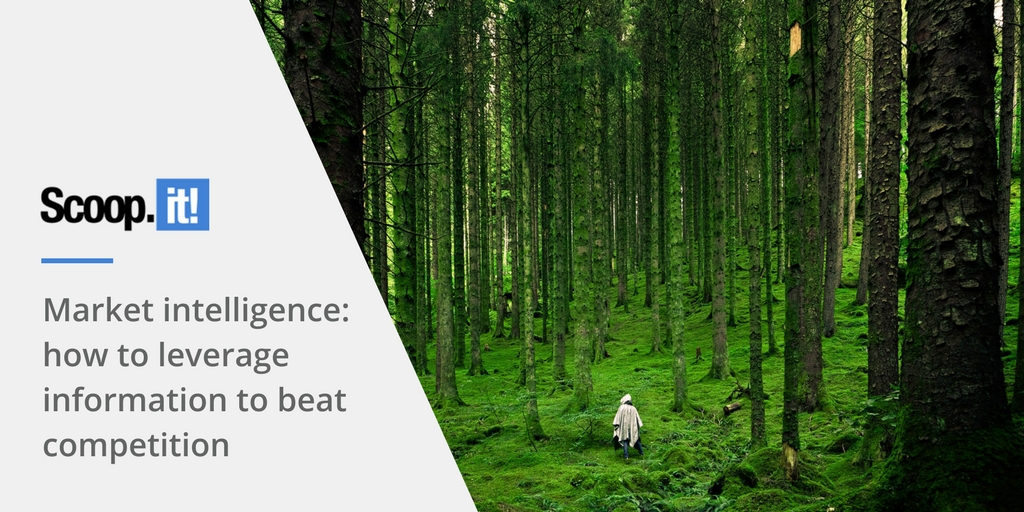
If you want to make relevant decisions, you need to listen. That’s what market intelligence is all about. Information and data (industry-related trends, competition, online reputation…) are very important assets for any company. If you check out the graph below, you’ll see that the amount of data created worldwide hasn’t stopped growing, and this growth will keep accelerating for the next few years.
Source : Kleiner Perkins – Internet Trends 2017
Source : Domo – Data never sleeps 5.0
Let’s take another approach to the topic. Setting a market intelligence practice is also a good way for companies to collect information and knowledge. If they leverage information properly, they’ll be able to know exactly their audience and its needs. The challenge is real and companies need to overcome it if they want to be successful.
Why market intelligence is essential to your company
> Understand your industry: the deeper knowledge of your industry you have, the better it is. This gives you a competitive advantage. It’s important to know who are the actors in your space (influencers, competitors, mainstream media, niche media…), especially now that we live in an all-digital world.
> Implement new trends: nowadays, it’s essential to keep up with new trends. You have to think beyond the usual topics within your industry if you want to innovate and not get beaten by the competition. Watching what’s happening in your industry only is no longer enough – you have to also monitor industries that are close to yours, understand where new disrupting ideas are found, etc.
> Know the needs of your clients and prospects: the key to a successful business is to know your customers and to be the best answer to their questions. Monitor the web, social media, understand what are the most popular pieces of content is a way to better understand your target and detect any changes in their behavior.
> Keep an eye on your competitors: to avoid being overtaken by your competitors, you have to keep up with the news, their new offers, the new competitors… it’s not just about taking a look at their website but, their online presence as a whole: blog, landing pages, online reviews, youtube accounts… what we call their owned media. But to have an overview of the situation, you need to be aware of what is being said about competitors on other types of media, such as specialized media, influencer blogs, etc. – this is earned media: this allows to understand the activity and the share of voice of competition on the internet, globally or more precisely by looking at data on a specific theme.
> Track your business’ online reputation: monitoring things is also a way to identify when your brand, products, or even key people in your company are mentioned so you can understand your company popularity and reputation. Compare this with competitors so you’ll understand how the brand is perceived in the industry by media, consumers, and the public.
> Be credible: The objective here is to be more credible when it comes to your brand. People now constantly research things on the internet on topics that are relevant to them – that means they are now better informed than ever. If a business communicates through its founders, PR and salespeople, it better leverage data and information to be credible.
> Anticipate risks and threats within your ecosystem: define a monitoring system in your company will allow people to analyze available information, to prevent risks, be able to anticipate, prevent and control the situation. For this to happen, you have to define these potential risks upfront.
To sum up, the point is not about knowing what are the perks of starting a strategic monitoring activity for your company. Let’s put it this way: can you NOT do market intelligence? Choosing an ostrich-like policy nowadays is just very dangerous for any business.
“Getting information off the internet is like taking a drink from a fire hydrant” Mitch Kapor
The key success factors of an effective market intelligence activity
Business intelligence and knowledge sharing activities are decentralized now, since the access to relevant information is not controlled by an authority anymore. So how not to miss any key messages and leverage the data that each and every employee is exposed to? The answer is: by organizing and qualifying the most relevant information.
This being said, many companies are not doing it in a strategic way, which results in a waste of time. And at the end of the day, the information is lost.
Here are a few tips that will help you be successful:
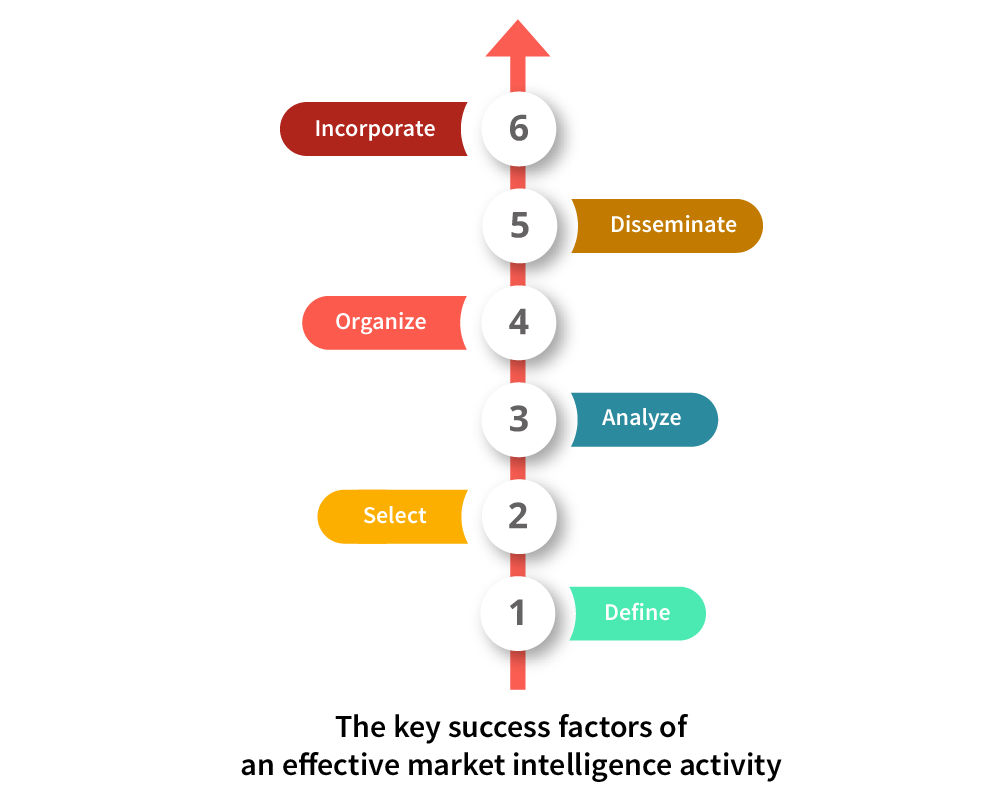
1. Define a framework and goals
As for any activity for the company, clear goals have to be defined upfront. That way, you can turn them into measurable KPIs (number of employees included, number of views generated, content count…) It’s also very important to define a proper framework, who it should be aimed at, the type of information to take into account, etc.
2. Select
Selecting the right info is a true challenge for businesses. You need to be able to identify reliable sources of information and put aside any fake news, but you also have to keep your eyes open for new sources that could impact your industry or competitors.
3. Analyze
Selecting the right piece of information is not enough. You have to analyze it, take into account any internal data and contextualize with the company’s challenges. By adding some value to the piece, people in charge of monitoring would be more willing to read it and push it internally.
4. Organize
Organize the activity by topic and stakeholders is a good way to improve its relevance and efficiency.
Moreover, you have to make it as visual as possible and easy to consume. This will be more impactful to your colleagues.
5. Disseminate
If you don’t disseminate intelligence, there’s literally no point. It’s important to distribute the information in an easy-to-consume format (a newsletter, for example). You could also integrate it with the existing tools in the company.
6. Incorporate into the company culture
It is necessary to make corporate culture and habits evolve, so the monitoring activity can be done at each level of the organization. It should be common to the C-suite as well as operational teams.
If you do content monitoring, content curation is your best friend
Content curation is a must in companies because it is the fuel of any content strategy, but it also helps disseminate, store, and optimize this critical asset that is knowledge.
It’s a good way to nurture internal discussions and to share information about major current trends.
A proper curation platform designed for content monitoring such as Scoop.it Knowledge Sharing, will help you manage all these moving parts:
- Filter the web in minutes
- Gather relevant information in a private content hub
- Editorialize the contact by adding relevant insights
- Disseminate intelligence in a more impactful way (via email or through SSO integration to your company tools)
Content intelligence: use data science to make content monitoring even more impactful
If you want to make your content monitoring practice even more powerful, technology will help. Today, AI can help you discover and analyze content even faster. When you’re responsible for strategic monitoring inside your organization, it’s relevant to include proper data and facts about your industry or competitors. That is content intelligence.
Analyze your content
Add data to your monitoring activity to understand what is your audience interested about is a true asset for C-suite (marketing, product and so on): what are the most popular pieces of content on your main topic? What are the most efficient formats? Which tone to use in front of your audience? Which topics create engagement?…
Competitive analysis:
Another crucial thing if you want to do monitoring right: keep an eye on what your competitors are doing. It’s always interesting to understand how your brand reputation evolves against your competitors’, what is your share of voice both globally and on specific topics. This is the best way to know how to focus all your efforts to be more competitive.
By adding data to the content you selected, you’ll help both your managers and colleagues have a better look at the bigger picture. That will be helpful for them when they have to take important decisions, and these will be based on actual data and facts, rather than their instinct.
Conclusion
Information needs to be filtered, selected, stored, and disseminated – otherwise it becomes useless. That’s how to get a competitive advantage. Indeed, this has to be completely integrated by top management to the company’s culture to avoid an ostrich-like approach. Technology today gives us an infinite amount of possibilities, so let’s make the best out of it to leverage information properly.

